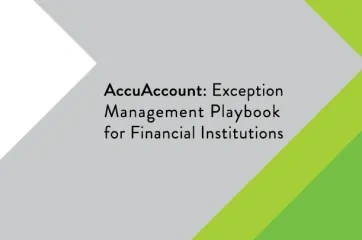Image Quality Control
Imaging quality control is the process of verifying that documents have been digitized, stored, and organized in a way that aligns with an organization’s standards.
Imaging quality control is particularly important for banks and credit unions that utilize document management software, such as AccuAccount. At a minimum, effective imaging quality control processes should seek to ensure the:
Veracity of the document: Documents should be fully executed and free from missing signatures and errant information.
Proper placement of the document: Documents should be stored in a logical hierarchy and linked to the proper customer/member and/or account.
Appropriate tracking of the document: Expiring documents (such as UCC financing statements, customer financials, and insurance policies) require additional attention during the QC process to avoid missing future exceptions.
Who Performs Imaging Quality Control at a Bank or Credit Union?
Depending on the financial institution’s imaging strategy, quality control may be performed by a variety of individuals.
Dedicated QC manager: Larger banks or credit unions with an advanced imaging workflow may assign a dedicated QC manager, who is primarily responsible for checking electronic images in the system.
Scanners checking other scanners: Another common approach to QC involves having one scanner check another scanner’s work.
Front-line staff checking scanners: Some banks and credit unions have lenders and loan assistants support the QC process by checking scanned and indexed documents.
It’s best to avoid having one person checking his or her own work. Relying on multiple sets of eyes reduces the chances for quality issues slipping through the cracks.
Why Imaging Quality Control is Important in Banking
Imaging quality control is increasingly important in the banking industry, especially as reliance on electronic documentation continues to expand. Once a hard copy document is destroyed, the electronic version becomes the document of record. Checking documents for potential issues at the time of imaging helps banks avoid operational and compliance issues by ensuring staff, auditors, and examiners can find what they’re looking for.
It’s therefore important to implement technology that simplifies imaging quality control for a variety of document types and use cases, including batch scanned documents, email attachments, and documents generated by the financial institution’s loan origination system.
Access Additional Imaging Resources
Continue reading additional banking definitions or browse our resource library, which contains numerous videos, downloadable PDFs and spreadsheets to help you simplify your bank's or credit union's imaging processes.







